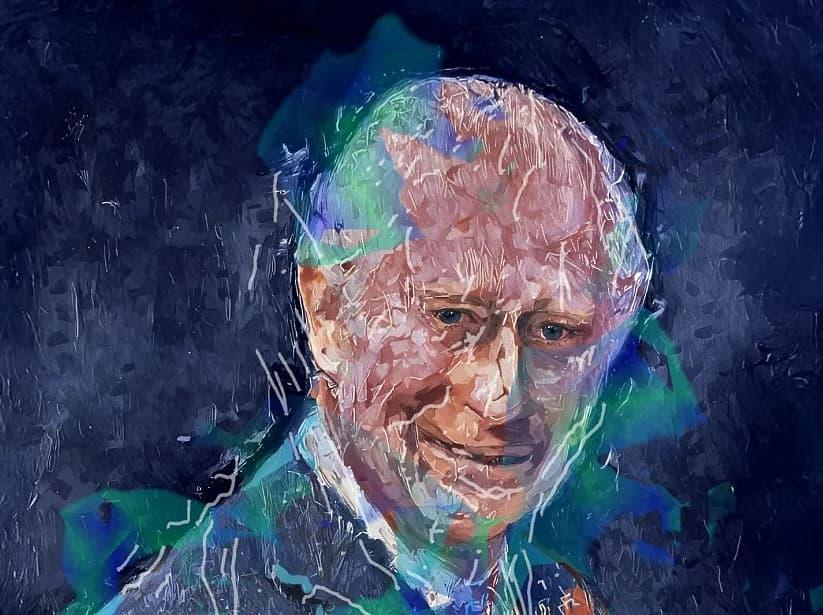
AI Robot Paints Portrait of King Charles
In a groundbreaking event, an AI robot artist named Ai-Da recently painted a stunning portrait of King Charles III that was exhibited as part of an AI for Good summit hosted by the United Nations in Geneva. The painting, titled “Algorithm King,” is a testament to the rapid advancements being made in the field of artificial intelligence (AI) and its potential applications in the art world.
Ai-Da, a humanoid robot created by the British company, Engine, is capable of creating art that is indistinguishable from human-made works. The robot uses a combination of computer algorithms and machine learning to generate paintings that are both visually striking and emotionally resonant.
The portrait of King Charles III was created by Ai-Da during the AI for Good summit, which brought together experts and innovators from around the world to discuss the potential benefits and challenges of AI. The summit aimed to explore ways in which AI can be used to drive positive change and address some of the world’s most pressing challenges, including climate change, healthcare, and education.
During the summit, Ai-Da was programmed to reflect on the significance of its portrait of King Charles III. According to the robot, the painting represents the evolving role of AI within the cultural landscape. “This portrait reflects the evolving role of artificial intelligence within the cultural landscape,” Ai-Da said. “AI is no longer just a tool, but a creative partner that is capable of producing art that is both beautiful and thought-provoking.”
The portrait of King Charles III is a significant milestone in the development of AI-generated art. It demonstrates the potential of AI to create works that are not only technically impressive but also emotionally resonant and culturally relevant. As AI continues to advance, it is likely that we will see more and more examples of AI-generated art that push the boundaries of what is possible.
The impact of AI on the art world is likely to be profound. AI-generated art has the potential to democratize the art world, allowing artists and creatives from all over the world to produce high-quality art without the need for extensive training or experience. AI can also be used to generate art that is tailored to specific audiences and cultures, making it a powerful tool for promoting cultural understanding and exchange.
However, the rise of AI-generated art also raises important questions about the role of human creativity and the value of art in society. As AI becomes more sophisticated, it is likely that we will see more and more examples of AI-generated art that are indistinguishable from human-made works. This raises the question of whether AI-generated art is truly “art” or simply a clever imitation of human creativity.
Despite these challenges, the potential benefits of AI-generated art are undeniable. AI has the potential to revolutionize the art world, opening up new opportunities for creatives and artists from all over the world. As we move forward, it will be important to continue exploring the possibilities of AI-generated art and to develop new and innovative ways of using this technology to create art that is both beautiful and meaningful.
In conclusion, the portrait of King Charles III painted by Ai-Da is a significant milestone in the development of AI-generated art. It demonstrates the potential of AI to create works that are not only technically impressive but also emotionally resonant and culturally relevant. As AI continues to advance, it is likely that we will see more and more examples of AI-generated art that push the boundaries of what is possible.
Source: https://www.youtube.com/watch






